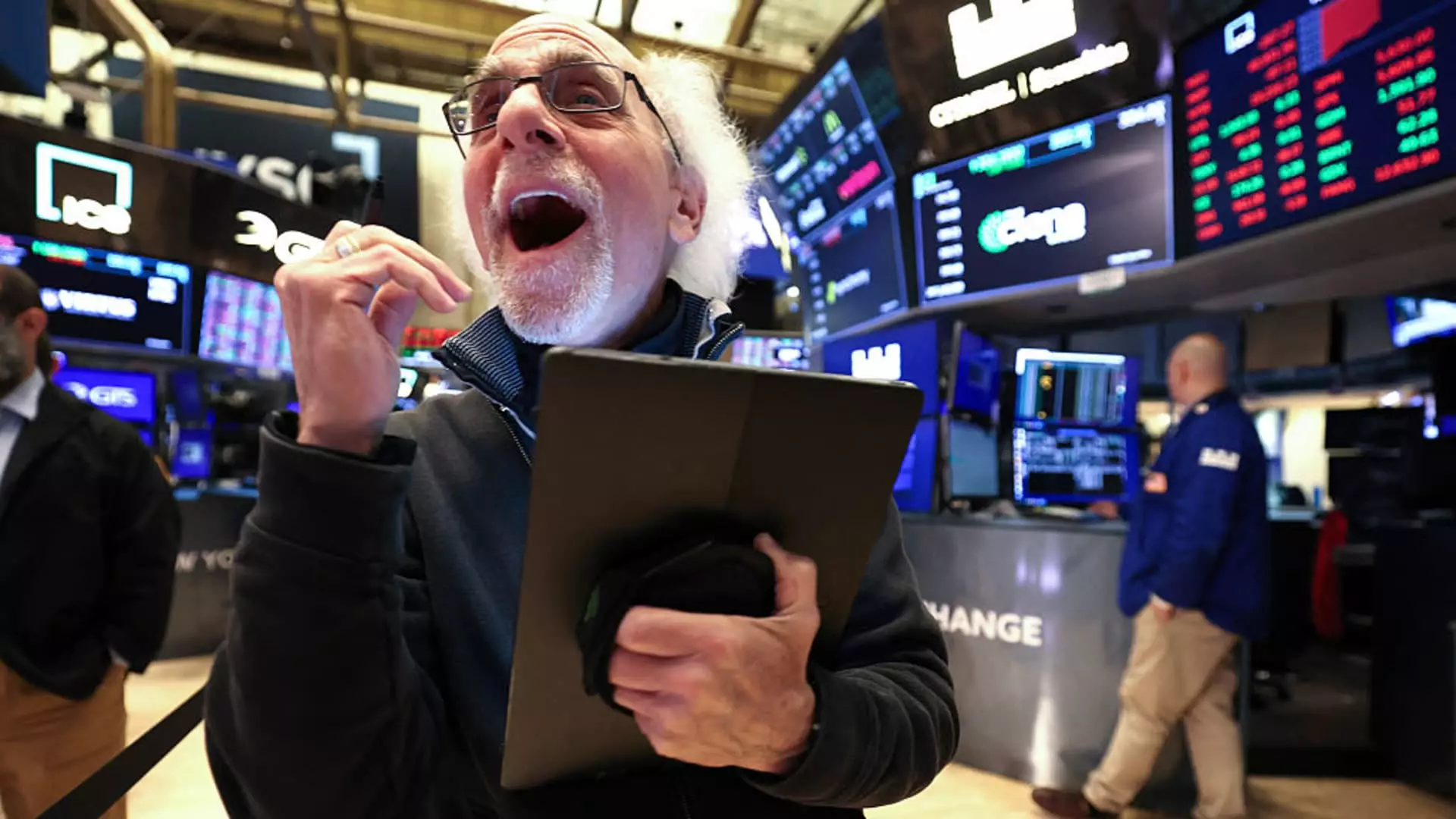The recent surge of the U.S. stock market, highlighted by fresh all-time highs in the S&P 500 and Nasdaq Composite, might seem at first glance to signal an unshakable bull run and robust economic recovery. Yet, this veneer of success hides a more nuanced and troubling reality beneath the surface. While headlines trumpet gains of around 4% from the previous week and a stunning 24% rise since April lows, these numbers gloss over profound structural weaknesses, geopolitical risks, and uncertainties embedded within the market’s sudden rebound.
This rally, almost inexplicably sharp following the upheaval caused by President Trump’s tariff announcements in early April, reflects not just confidence but also the market’s vulnerability to speculative exuberance. The fact that this rapid recovery occurred despite ongoing international tensions and unclear Federal Reserve directions is less a testament to economic strength and more a reflection of an overheated market grasping for growth narratives wherever they can be found.
Artificial Intelligence: The Double-Edged Sword of the Market
One of the primary narratives fueling this wave of optimism is the resurgence of the generative artificial intelligence (AI) trade. Tech behemoths like Nvidia and Microsoft have grabbed headlines for setting new stock price records, driven by enthusiasm over AI’s potential to revolutionize industries. Nvidia’s market capitalization swelling to nearly $4 trillion is certainly a feat. Still, it raises critical questions about valuation realism and the market’s capacity to distinguish between speculative hype and sustainable growth.
The aggressive deals, such as Nvidia’s contract supplying AI chips to Saudi Arabia, while impressive, also underscore uncomfortable geopolitical undercurrents. Such transactions tie technological advancement directly to international power dynamics in ways that market pundits rarely address critically. The AI-driven boom in semiconductors and cloud infrastructure, while promising innovation, may be overshadowed by an overreliance on a handful of dominant players and regions, increasing systemic risks in global supply chains.
More so, the notion that demand for AI chips will perpetually increase discounts the potential for rapid technological shifts or regulatory interventions that could stall progress. Investors are gambling on relentless demand, ignoring the inherent volatility of emerging tech sectors, especially those enmeshed with political friction between the U.S. and China.
The Illusive Sanctuary of Defense and Cybersecurity Stocks
Parallel to the AI boom, defense and cybersecurity firms have emerged as “safe havens” amid geopolitical conflicts, driven by concerns over cyber warfare and instability in the Middle East. Companies like CrowdStrike reaching record highs symbolize market faith in perpetual defense sector growth tied to modern warfare and digital threats.
While it’s valid to see defense stocks as opportunities during times of conflict, this narrative dangerously conflates profit with the perpetuation of global instability. Investors are essentially betting on worsening security crises, perpetuating a cycle where economic incentives are aligned with conflict escalation. This ethical paradox often goes unnoticed in financial analyses that prioritize returns over long-term peace and stability.
Furthermore, the dependence on defense stock outperformance as a market pillar reveals a deeper malaise: the U.S. economy and broader global markets seem increasingly tethered to conflict-driven industries, detracting from investments in constructive, peace-building sectors that could foster sustainable prosperity.
Overstated Economic Resilience and Its Consequences
The final pillar of this triumphant narrative claims that the U.S. economy is holding firm, with Federal Reserve Chair Jerome Powell’s comments on economic solidity encouraging investors to believe in steady growth without immediate rate cuts. This viewpoint has propelled giants like Goldman Sachs and Capital One to new heights, as dealmaking and consumer spending appear robust.
Yet, to hail economic resilience in this context smacks of complacency and selective optimism. The Federal Reserve’s cautious stance is more a reflection of uncertainty than confirmation of strength, embodying a wait-and-see approach that masks underlying fragilities. The stock market’s enthusiasm for investment banking IPOs and credit card companies leans heavily on sustained consumer activity, which remains vulnerable to inflationary pressures, income inequality, and shifting employment trends often overlooked by headline metrics.
Moreover, the Capital One-Discover merger, praised as a strategic masterpiece, should invite skepticism about excessive consolidation in the financial sector. Such megadeals threaten competition and consumer choice even as they buoy stock prices. Jim Cramer’s bullish endorsement, while influential, can inadvertently fuel herd mentality, risking inflated valuations detached from economic fundamentals.
Market Euphoria or Brewing Reckoning?
This euphoric market phase, propelled by AI fantasies, defense urgencies, and perceived economic grit, feels more like a precarious peak than an enduring peak. It showcases how stock market dynamics can distort reality, spinning optimistic tales that charm investors but obscure systemic risks lurking beneath.
The current rally’s vigor stems less from true economic progress and more from a cocktail of speculative hope, geopolitical tension, and policy ambiguity. Investors and policymakers must resist the urge to celebrate the high tide without addressing the structural challenges: strained international relations, technological dependency, conflict-driven economics, and financial sector concentration.
Blind enthusiasm risks repeating cycles of boom and bust, where market highs sow the seeds of future instability. It is imperative for a mature, center-liberal perspective to call for greater transparency, nuanced risk assessment, and a shift toward investments that reconcile economic growth with social and geopolitical responsibility—lest short-term gains unravel into long-term setbacks.

